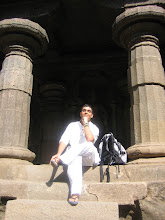
...It was settled, I was going to California, albeit not with flowers in my hair. Being a son of NYC, born and raised, I had a somewhat mystical vision of this land far beyond the West of the Hudson. Its California baby, the golden state! Starting my graduate studies at UC Berzerkeley was only part of the excitement.
In many ways, California is the root of the Buddha Dharma in America. When the Dharma came West, it landed in Cali. The oldest Buddhist temple in the US, in the Jodo Shinshu tradition (Japanese Pure Land) was built in San Francisco where it still stands today. And of course, no discussion of Zen in America would be complete without mentioning the San Francisco Zen Center, founded by Shunryu Suzuki, author of the classic "Zen Mind, Beginner's Mind".
When my friend and future housemate picked me up from the airport and put the car radio on, what else could be blastin' but Dre and 2pac's classic jam "California Love"? How's that for an auspicious sign?
The first order of business in exploring my new environs was to find a place to practice. The Bay Area certainly has no dearth of temples and Dharma centers so the question was which one to choose. My main criterion was that the place be a "real" temple i.e. with resident monastics, daily liturgies, & ceremonies, etc. I don't have anything against the "meditation crowd" who focus almost exclusively on the practice of vipassana or zazen but I just find something very grounding about temples (in the traditional sense) and holy places in general.
Ever the strategist, I had looked up a number of places not too far from where I staying. The first place I visited was the Berkeley Zen Center, which also happens to be right next to a Thai temple on the same street. While it was a cosy little zendo, it was farther than I would have preferred. Next on my list was one that made me the most curious: the Berkeley Buddhist Monatsery. Aside from being a branch of the City of Ten Thousand Buddhas, it was also noteworthy because of its head monk, the Ven. Heng Sure. Back in NY, I had heard stories about this "really funny Californian monk", of "Three Steps One Bow" fame, but there were another of other things that made the place attractive. It was within walking distance from my place and, more importantly, it was in the Chinese Ch'an tradition; a tradition I was very familiar with.

Every Saturday night, Ven. Heng Sure lectures on the Avatamsaka Sutra, a text I was familar with and still profoundly influences the way I approach my practice (the parts that I can understand anyway!). The monastery itself is a fascinating place. It used to be a Zionist church and as far as I know, is the only temple that I know of which has stained glass windows of bodhisattvas.
I showed up to the lecture and all of the standard fare seemed to be intact: A Dharma request/incense offering, preliminary chanting, and the lecture itself. The lecture itself was awesome, very informative and in a distinctly American style that managed to retain the essence of the text. Great. With the lecture concluded, it was time for dedication of merit.
"OK its time for us to dedicate merit. Put your palms together, make a wish, make a vow, and send it out there" Ven. Heng Sure said. Immediately after this, he pulled out a guitar. Let me repeat this: he pulled out a guitar and started playing. You'll have to excuse my shock since I wasn't accustomed to folk singing monks but there he was, leading us in a lovely dedication, set to the tune of Loreena McKinnett's "Dark Night of the Soul". At a conference held at the Berkeley Monastery, Ven. Heng Sure said during the introductory talk, "if you're not used to seeing a monk with a guitar, be very, very afraid".
Encountering the Buddha's Dharma has certainly been a profound and life changing experience, but then again, I suppose that's the whole point. So what's next? Not quite sure but the story will continue.
On that note, I'll end "My Story" series in a traditional manner: dedicating the merit. Whatever goodness has come out of sharing these experiences, may all beings delight in it. Or if you prefer, I'll let Ven. Heng Sure (with the guitar) close things out.













